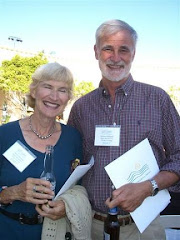Professor Simon J. Gaskell
Professor Simon J. Gaskell
Director of the Michael Barber Centre for Mass Spectrometry
Email: simon.gaskell@manchester.ac.uk
Tel: (011) 44 161 306 4532
Fax: (011) 44 161 306 4421
Biography
BSc,PhD, Bristol; MRC Postdoctoral Fellow, University of Glasgow; Principal Research Officer, Tenovus Institute for Cancer Research, University of Wales College of Medicine; Professor of Experimental Medicine and Pharmacology, Baylor College of Medicine, Houston (USA).
Research interests
The research interests of my group, in the Michael Barber Centre for Mass Spectrometry, involve the development and application of state-of-the-art mass spectrometry, with particular reference to applications in the biomedical sciences. In recent years, a major effort has been devoted to proteomics, an area of “post-genome science” that has been enabled by the international efforts to sequence the genomes of many organisms, including man. Proteomics involves the qualitative and quantitative determination of the protein compositions of cells, with attention to the characterisation of the protein/protein complexes that are the real biochemical machinery. The Michael Barber Centre hosts, in collaboration with the Department of Biomolecular Sciences, the Leukaemia Research Fund National Proteomics Facility. The strongly interdisciplinary nature of our research is further emphasised by our participation in the Consortium for Post-Genome Science, a heavily funded programme involving UMIST, the Universities of Liverpool and Manchester, and the Daresbury Laboratory. Within the Consortium, we lead the Third-Generation Proteomics project which is funding the purchase of a 9.4 tesla Fourier-transform ion cylotron resonance mass spectrometer.
The chemist’s contribution to research such as this must be based on a clear understanding of the instrumentation used for mass spectrometry and of the gas-phase ion chemistry that is integral to this suite of analytical techniques. Thus, for example, we are concerned with aspects of instrument development (such as the exploitation of surface-induced decomposition in tandem mass spectrometry). In addition, much effort is directed towards studies of peptide ion fragmentation and this has enabled us to propose general mechanisms of charge-directed ion cleavages.
Based on such fundamental understanding of our analytical chemical techniques, we are able to contribute to the elucidation of problems of fundamental biological and clinical importance. Working with colleagues at the Manchester Royal Infirmary, for example, we have shown for the first time that the oxidation of low density lipoprotein (LDL) from human blood may result in the formation of lipid-protein conjugates that may influence the uptake of LDL by the arterial wall. In collaboration with researchers from the University of Houston and the University of North Carolina, Chapel Hill, we have studied the inhibition of a critical functional protein from Escherichia coli by synthetic antibiotics.
Recent publications
Meneses-Lorente G, Watt A, Salim K, Gaskell SJ, Muniappa N, Lawrence J, Guest PC. Identification of Early Proteomic Markers for Hepatic Steatosis. Chem Res Toxicol. 2006; 19: 986-998.
Broadhead R, Dawe HR, Farr H, Griffiths S, Hart SR, Portman N, Shaw MK, Ginger ML, Gaskell SJ, McKean PG, Gull K. Flagellar motility is required for the viability of the bloodstream trypanosome. Nature. 2006; 440: 224-7.
Beynon RJ, Doherty MK, Pratt JM, Gaskell SJ. Multiplexed absolute quantification in proteomics using artificial QCAT proteins of concatenated signature peptides. Nat Methods. 2005 2:587-9.
Konn DO, Murrell J, Despeyroux D, Gaskell SJ. Comparison of the effects of ionization mechanism, analyte concentration, and ion "cool-times" on the internal energies of peptide ions produced by electrospray and atmospheric pressure matrix-assisted laser desorption ionization. J Am Soc Mass Spectrom. 2005 16:743-51.
Doherty MK, Whitehead C, McCormack H, Gaskell SJ, Beynon RJ. Proteome dynamics in complex organisms: using stable isotopes to monitor individual protein turnover rates.Proteomics. 2005 Feb;5(2):522-33.
Friday, April 11, 2008
Subscribe to:
Post Comments (Atom)







































.jpg)

No comments:
Post a Comment